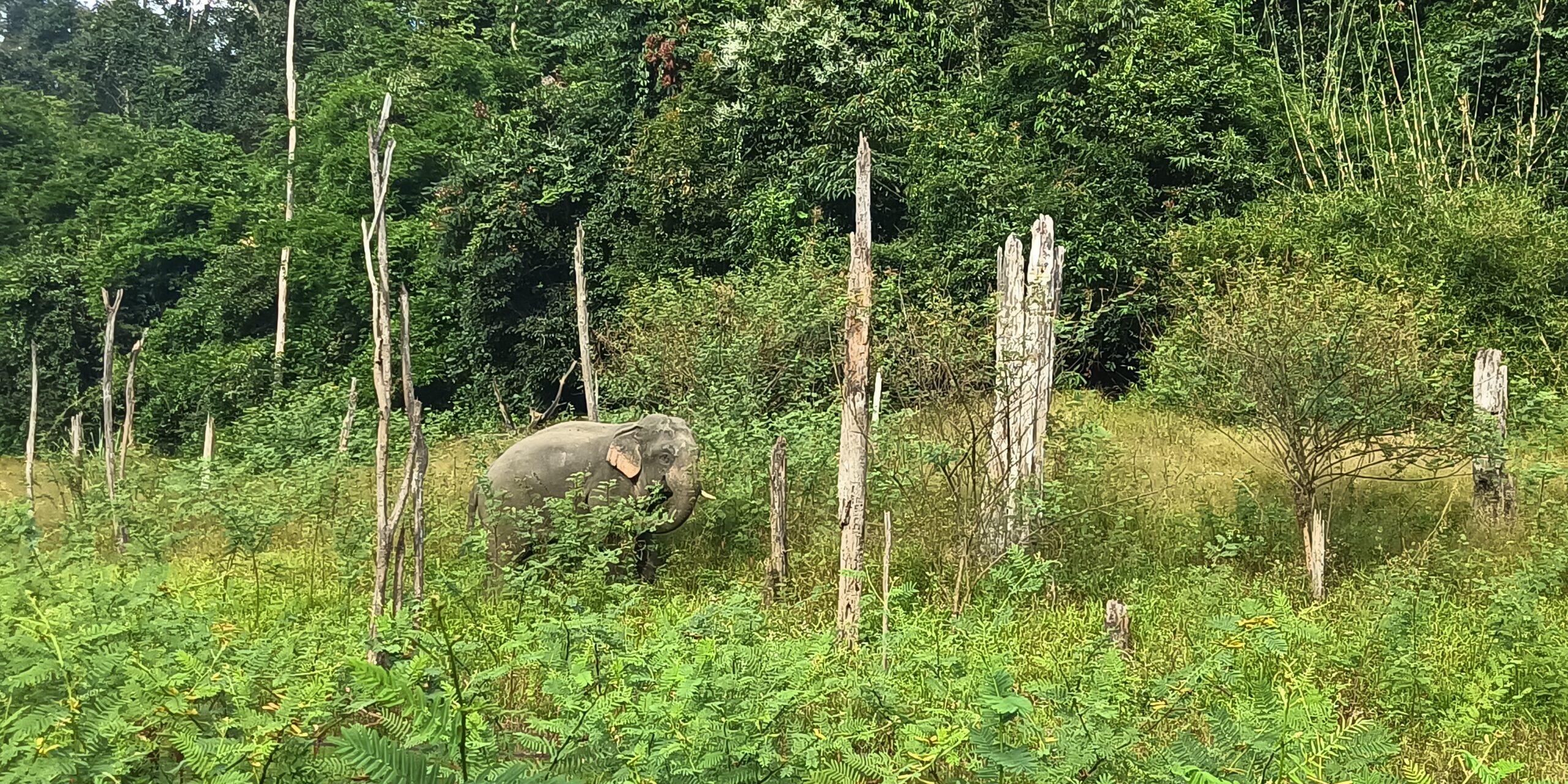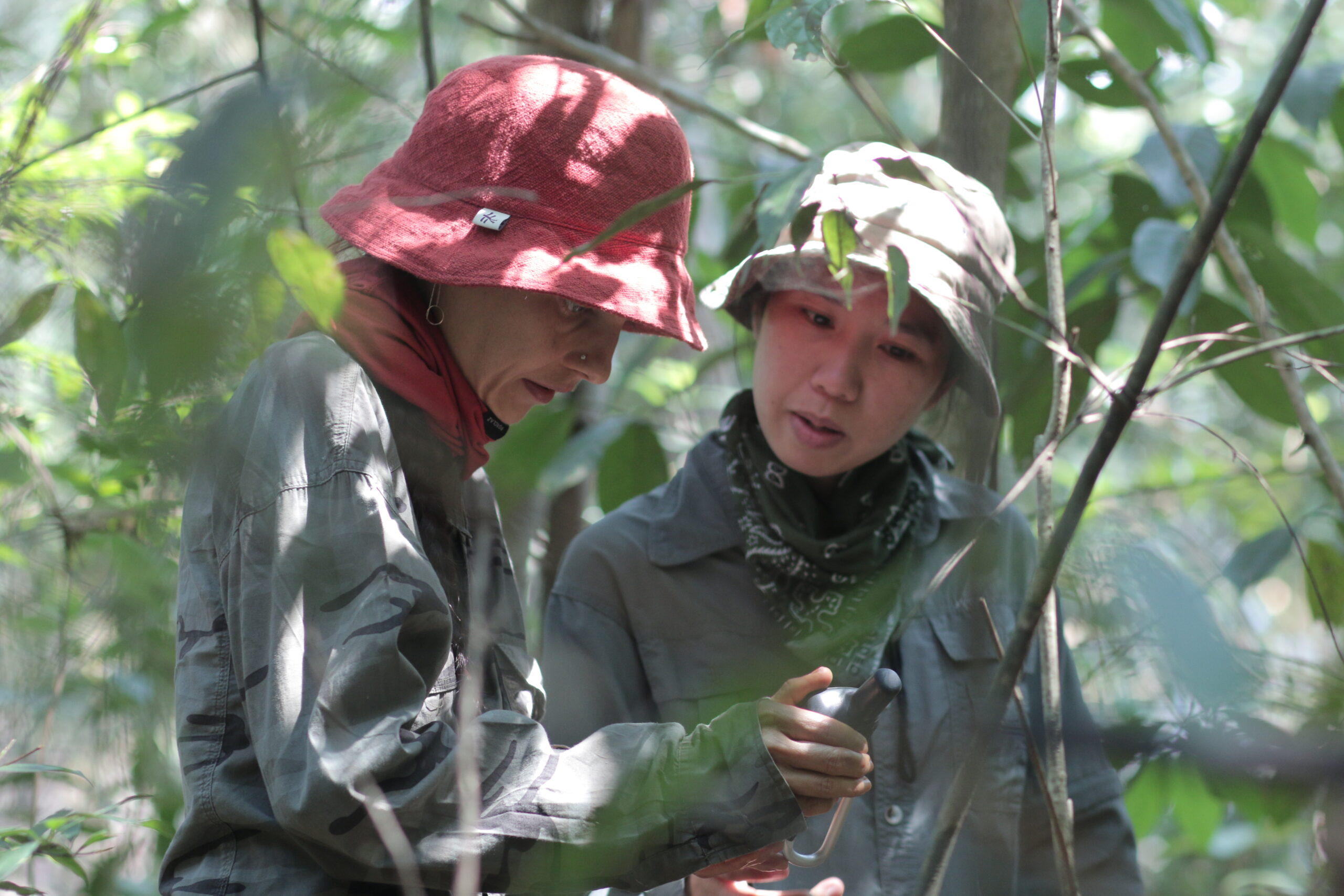
In April and May 2023, Association Anoulak hired a team of two freelance Lao filmmaker and photographer: Ms Chansamai Phanouvong (camera) and Ms Meesouk Phetsompou (camera assistant and photography), to follow our team during the surveys and produce a short film presenting our elephant survey project. The final film will be presented to and shared with all project’s partners and stakeholders at the completion of the project, later this year.

Filming our elephant survey project in April 2023

Freelance Lao filmmaker and photographer, Ms Chansamai Phanouvong (on the right) and Ms Meesouk Phetsompou (on the left)

Association Anoulak technical field officer Ms. Keo

From left to right: Ms Chansamai Phanouvong (freelance Lao filmmaker); Ms. Keomany Leuangthi (Association Anoulak technical field officer), Ms Meesouk Phetsompou (camera assistant and photography), Ms. Camille Coudrat (Association Anoulak founder and director, and project leader)
Since November 2022, Association Anoulak launched an elephant survey in Nakai District, Khammouan province. For this elephant survey, we apply non-invasive fecal DNA-based capture–recapture population survey methods which consist of collecting elephant dung samples from which individual elephant DNA is later extracted in laboratory. Prior to starting the surveys, we selected eight survey sites where elephants are known to regularly visit. Our technical field surveyor Ms. Keomany Leuangthy (including two government partner representatives from the Nakai-Nam Theun National Park and the Nakai District Agriculture and Forestry Office), under the supervision of project leader, Dr. Camille Coudrat, visited the eight sites each month from November 2022 to May 2023. The elephant dung samples collected over the past 7 months will then be processed in a laboratory in Laos to extract elephant DNA, at the individual level. The DNA extract will then be further processed and analyzed.
The objectives of our project are:
- To provide an estimation of the current elephant population size using a non-invasive genetic sampling survey of the population of Asian Elephants on the Nakai Plateau and surrounding areas
- To provide the current status of the genetic diversity, social structure and dynamic of the population of Asian Elephant on the Nakai Plateau and surrounding areas

Wild elephant sighted from the survey-boat during one of our surveys
Background information:
One of the largest elephant populations of Laos is in Nakai-Nam Theun National Park and surrounding areas. In 2008, a hydroelectric dam led to the flooding of a significant part of the elephant population’s habitat. Prior to the impoundment, the population was estimated at 132 elephants, likely the largest and genetically most diverse in Laos at the time. But it was suggested that it would be affected and disperse due to the habitat loss. Since the impoundment, elephants have moved closer to villages and human-elephant conflicts have increased across a wide region. The size of the elephant population has not been systematically monitored. Association Anoulak therefore led this study to provide information for elephant conservation planning in the area, with implications for the national and global long-term conservation of the species.
A selection of the photos taken by the filming and photography team:






Ms. Keomany Leuangthi, Ms. Camille Coudrat and Mr. Ounjai (government representative) during a survey

Ms. Keomany Leuangthi, Ms. Camille Coudrat and Mr. Ounjai (government representative) measuring elephant dung boli circumference to estimate individual age

Ms. Keomany Leuangthi and Ms. Camille Coudrat conducting villagers interviews on recent elephant sightings

Ms. Keomany Leuangthi and Ms. Camille Coudrat conducting villagers interviews on recent elephant sightings


